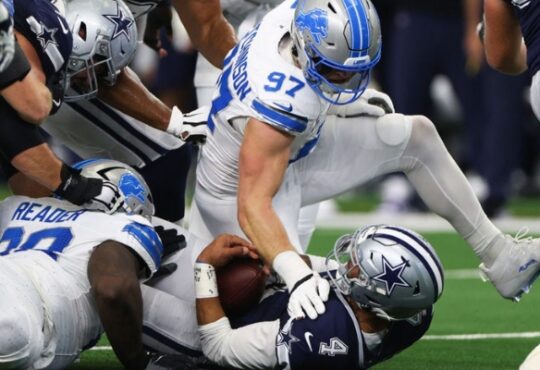
Women’s clothing is one of the biggest segments in the fashion industry. This is largely because women are the most conscious consumers when it comes to their clothing.
Following the lead of couturiers such as Paul Poiret, Coco Chanel erased corsets and replaced them with jersey dresses in free-flowing silhouettes that allowed women to move comfortably. This was the start of the modern feminine wardrobe.
The History of Women’s Clothing
In the past, women’s clothing was often a reflection of societal norms and standards. Women were often bound to strict standards that dictated how much skin they could show, and many artificial means were employed to achieve a desired look, such as whalebone corsets or binding the feet to produce small “lotus feet.” These artificial methods tended toward extreme and unrealistic results.
As times changed, women began to seek more comfortable and practical attire, and the emergence of the ready-made garment industry helped them achieve this goal. In the 1920s, a style known as La Garconne dominated fashion, featuring tubular dresses that resembled suits and were made from economical fabrics. The look was characterized by feminine styles with masculine accents, such as high-waisted pants and hats. This style was paired with long strings of pearls and a deep red pout on the lips.
The 1910s and 1920s also saw the rise of a new style called the flapper dress, which was shorter than previous styles and had dropped waistlines and raised hemlines. This new style was also more casual and relaxed than the more formal gowns that had been popular in previous centuries, and it reflected the desire of women to be freer and more independent.
During World War I, the desire for women to be more flexible with their attire took a back seat to practicality as women became enlisted in roles previously reserved for men. Many women found themselves working in munitions and factories, tending farms, or driving ambulances. This led to a more utilitarian approach to clothing as skirts got shorter and undergarments were reworked for functionality while hemming dresses became commonplace.
In the 1920s, women’s clothing also embraced sportswear as daywear, as illustrated by Suzanne Lenglen’s short-sleeved tennis dress and bandeau. This was a far cry from the restrictive and impractical hobble skirts of 1910, which were so narrow that women had to ‘hobble’ along in them.
Today, women’s fashion is a multi-billion dollar industry that is growing at a steady rate, with some market research firms forecasting the sector to grow by over five percent annually. This growth is attributed to several factors, including the increasing global population of women, the increase in female empowerment, and ongoing changes in fashion trends.
The Influence of Women’s Clothing on the Fashion Industry
Women’s fashion is a very important industry that influences many different aspects of society. It is not just about the clothes that are worn; it also plays a large role in how women feel about themselves. For example, some women prefer to wear a certain type of outfit that is associated with a certain era. This is because it reflects the lifestyle that was popular at the time. Other women may prefer to wear something trendy and modern.
While the fashion industry is a huge contributor to social issues, it has also been used as a tool for change. For instance, the 1917 first and largest female-led labor strike left a thumbprint on fashion by influencing a shift to more comfortable clothing for women to work in. The Great Depression brought about a democratization of fashion by allowing buyers to purchase copies of Paris designs and resell them in their countries for a fraction of the original price. These copies were known as toiles and came with complete directions and muslin fabric garment patterns. This allowed buyers to sell simplified versions of the original expensive dresses and was a precursor to the mail-order clothing industry.
Looking stylish doesn’t have to break the bank! With Apparel & Clothing Discount Code, you can save big on all of your favorite outfits and shoes. Whether you’re looking for casual wear or something more formal, SavingGain has you covered. With their wide selection of clothing and footwear, you’re sure to find something that fits your style and budget. Plus, with the added savings of using a discount code, you can afford to treat yourself to a few extra pieces. Don’t sacrifice style for affordability – with SavingGain, you can have both!
With a steady rise in women’s demand for new clothes, manufacturers have responded by increasing production and lowering prices. These changes have led to more and more clothes on the market, which can make it hard for consumers to decide what to buy. Consumers are also concerned about the environmental impact of their purchases and want to make more ethical choices.
This has made the apparel industry a hotbed for controversy. The globalization of supply chains has resulted in some of the worst exploitation of garment workers, most of whom are women. This has become a hot-button feminist issue, with women leaders using their voices and platforms to call for greater transparency and accountability.
Despite this controversy, the fashion industry has seen consistent growth in recent years. This has been attributed to the rising number of women who are conscious of their appearance, the continuous evolution of fashion trends, and increased disposable income. Additionally, the internet has played a significant role in educating consumers about new styles and options. Manufacturers are also leveraging online channels to expand their reach by offering personalized women’s clothing to meet the needs of consumers, endorsements from celebrities, and discounts.
The Influence of Women’s Clothing on the Textile Industry
Women’s fashion is a huge industry that contributes to the economic development of various countries around the world. This is mainly due to constantly evolving fashion trends and women’s empowerment. In addition, eCom and social media have helped in creating awareness of the latest clothing from different parts of the world. The global value of the fashion industry is estimated to be around 600 billion dollars and employs more people than most leading industries worldwide.
Women are the majority of the workforce in garment factories around the world and the vast majority of those work in the textile and fashion industry. These female workers often work in dangerous conditions and receive low wages. They are also at a high risk of contracting life-threatening illnesses. Despite the positive messages and images of equality and feminism that we see on graphic tees, women are still being exploited by clothing companies.
One of the most important influences on the textile and fashion industry is women’s clothing, particularly dresses. Dress sales declined in the first decade of the twenty-first century, but then rebounded. In the 1920s, women’s skirts became shorter and in the mid-and late-20th century, they began to resemble men’s trousers.
As fashion has evolved, so have the textiles that are used in it. The use of synthetic fabrics has allowed for the creation of new shapes and styles. Fibers such as silk, cotton, and wool have been manipulated to create unexpected effects. These range from sheer and sculptural to sleek and futuristic.
Textile and clothing manufacturers have attempted to counteract declining exports by increasing productivity. Technological innovations such as shuttleless looms, robotics, and nanotechnology have improved the speed, efficiency, and quality of production. The industry has also lobbied to put an end to China’s currency manipulation, which they believe gives them as much as a 40 percent trade subsidy.
While many factors influence the textile and fashion industry, consumers have a large impact. They can support sustainable fashion by purchasing clothes that are made from recycled and organic materials. They can also take steps to make sure that their purchases are not contributing to the exploitation of workers or damaging the environment.
If you’re looking for reasonable women’s clothing and accessories, look no further than Merrell Promo Code! With their Coupon Code, you can get great deals on high-quality clothing and accessories that are perfect for any occasion. From comfortable and stylish shoes to rugged outdoor gear, Merrell has everything you need to look and feel your best.
The Influence of Women’s Clothing on the Retail Industry
The fashion industry is a massive business. It accounts for a significant percentage of global GDP and employs millions of people worldwide. However, it’s not without its challenges. Global economic gloom has led to lower sales projections and higher operating costs, while consumers have adjusted their shopping habits, with cost-conscious shoppers trading down or buying less expensive products. The luxury sector has remained strong, with wealthy customers less heavily affected by inflationary pressures.
The affluent consumer is also more likely to spend on clothing that’s ethically produced, sustainable, or made with recycled materials. This has helped to slow the rate of growth of the industry. However, it has also contributed to the rise of fast fashion, which has been blamed for a range of environmental and social problems. Thankfully, this has been offset by more environmentally friendly alternatives to traditional retail such as secondhand shopping and apps like Depop that let Gen Z’ers thrift from their peers’ closets. Sources in a 2021 McKinsey report also suggest that the resale market could grow to be bigger than new apparel by a decade from now—a cheering prospect for those who worry about the millions of tons of textile waste that’s dumped in landfills each year.
While women’s clothing has been shaped by the shifting styles of eras, its purpose remains the same: to protect from the elements, maintain modesty, furnish adornment, and fix status. The woman of the early twenty-first century obtains her clothes through a complex system of trade, but her goals are fundamentally unchanged from those of a fashionable young nineteenth-century Londoner purchasing a Worth gown or a Roman matron ornamenting her tunic.
As the industry continues to evolve, leaders will need to focus on risk mitigation strategies, especially in regions where conflict and political instability are commonplace. The industry must develop resilience to volatility and the ability to adjust quickly to shifts in customer and supply chain dynamics. Brands that do not will be left behind as more discerning shoppers seek out authenticity and sustainable value. The future belongs to those who embrace the challenge of transforming the industry into one that serves its many stakeholders.
Conclusion
Women’s clothing has had a significant impact on the fashion industry throughout history. From corsets to pantsuits, women’s fashion has pushed boundaries and challenged societal norms. Today, women continue to drive trends and shape the industry through their choices and preferences. The influence of women’s clothing will continue to be a driving force in the fashion world for years to come.








